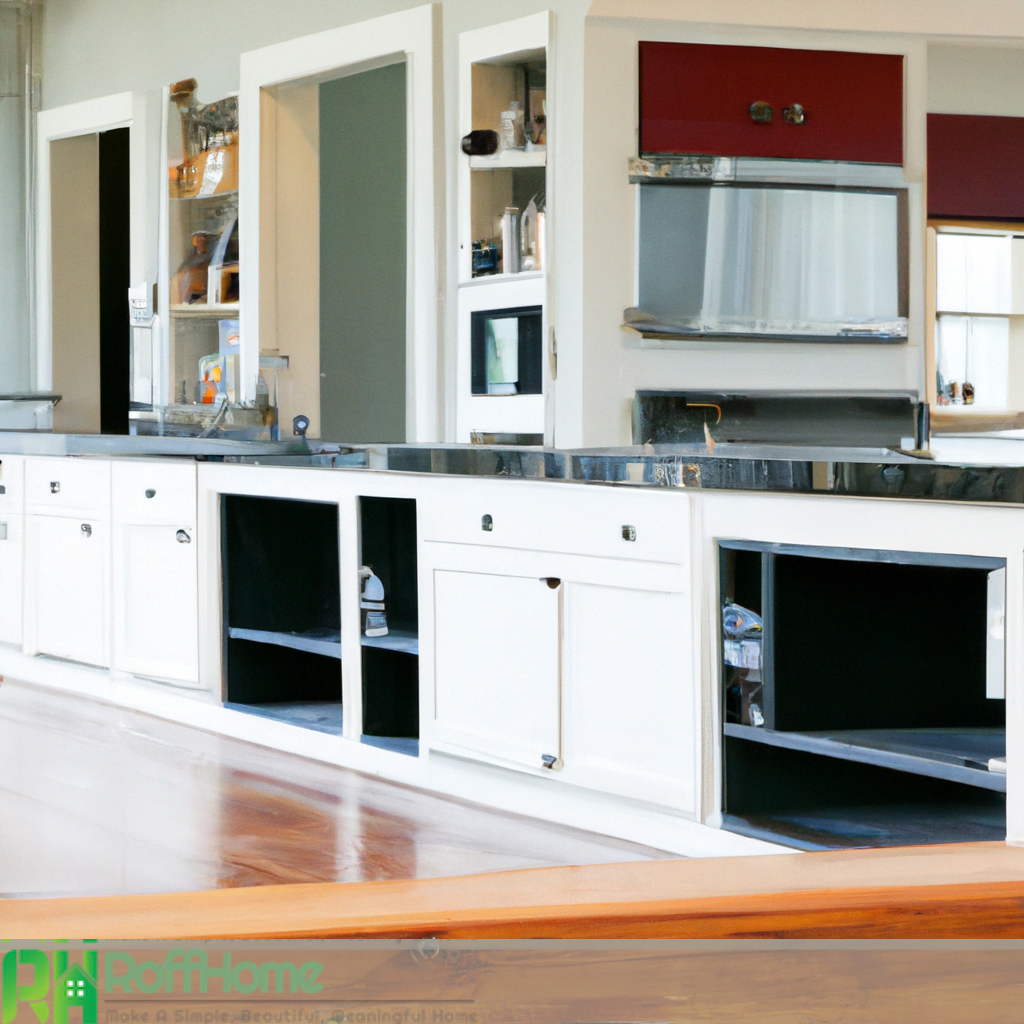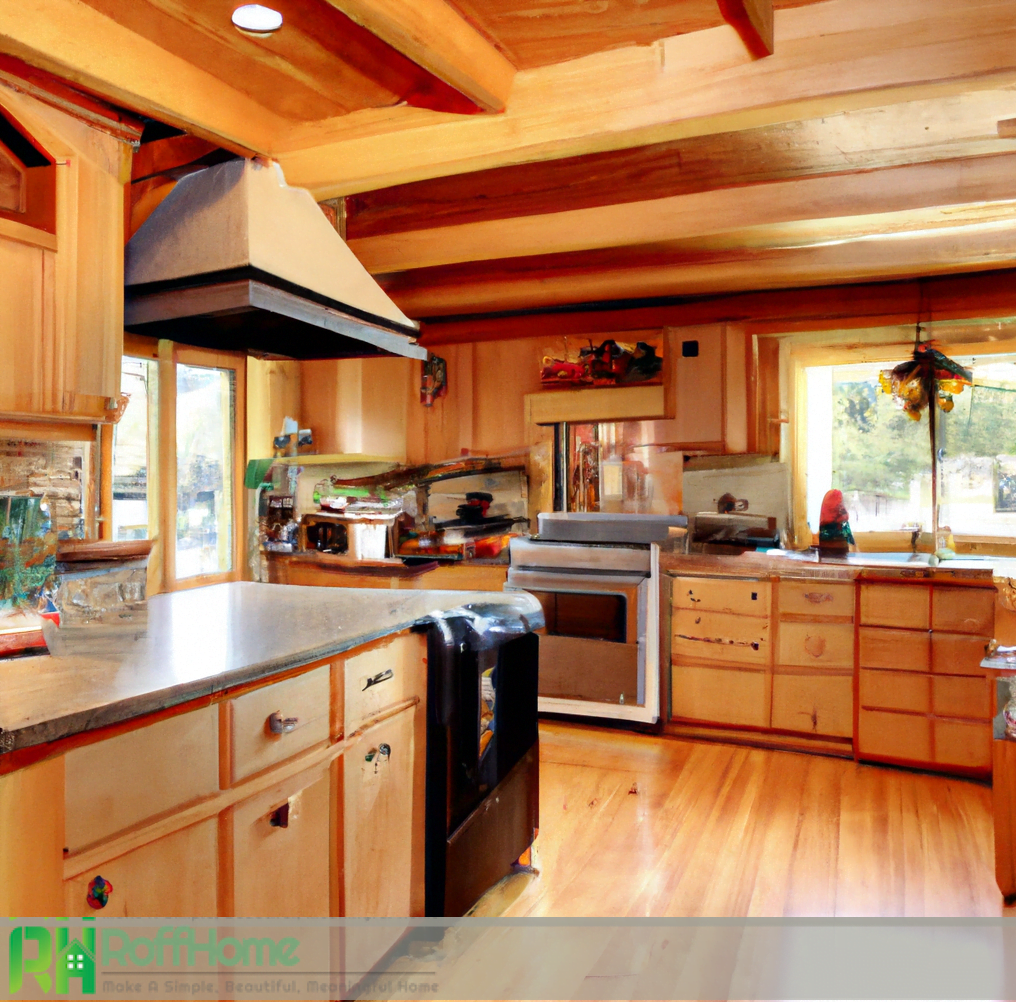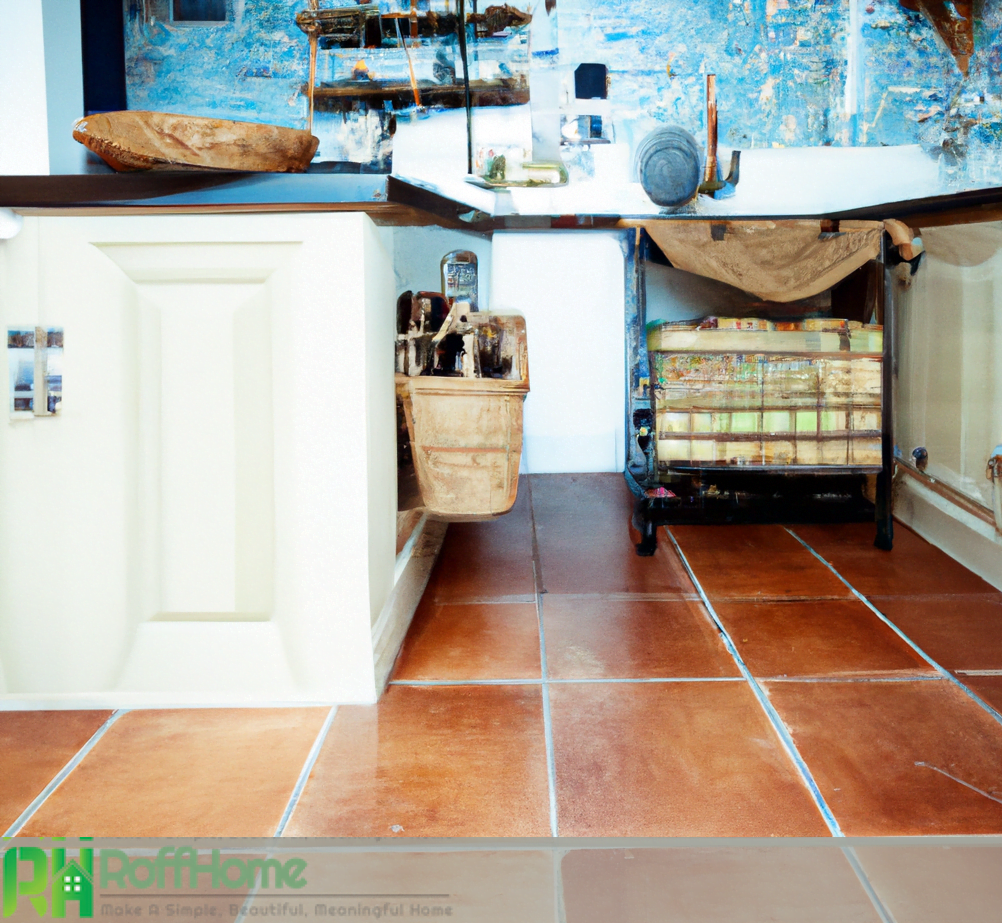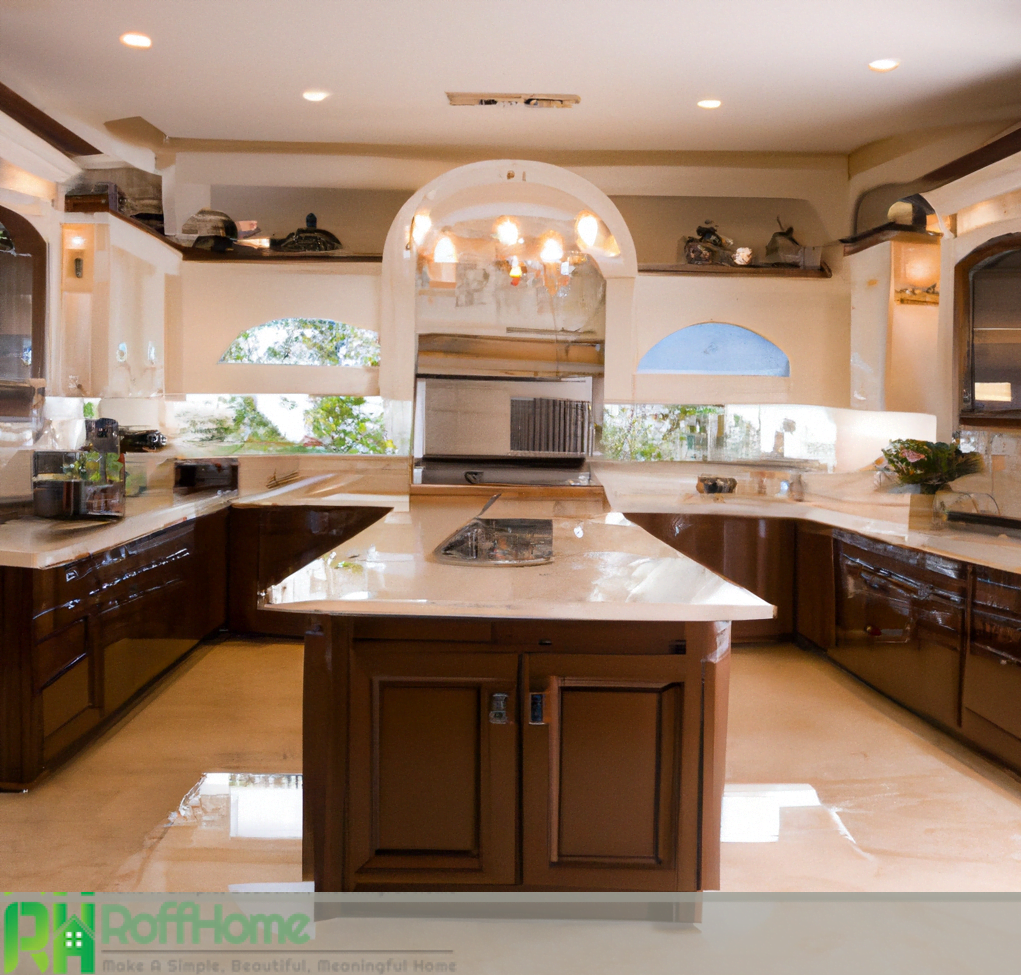Create a Stylish and Functional Space: Kitchen Dining Living Room Combo Ideas in 2023
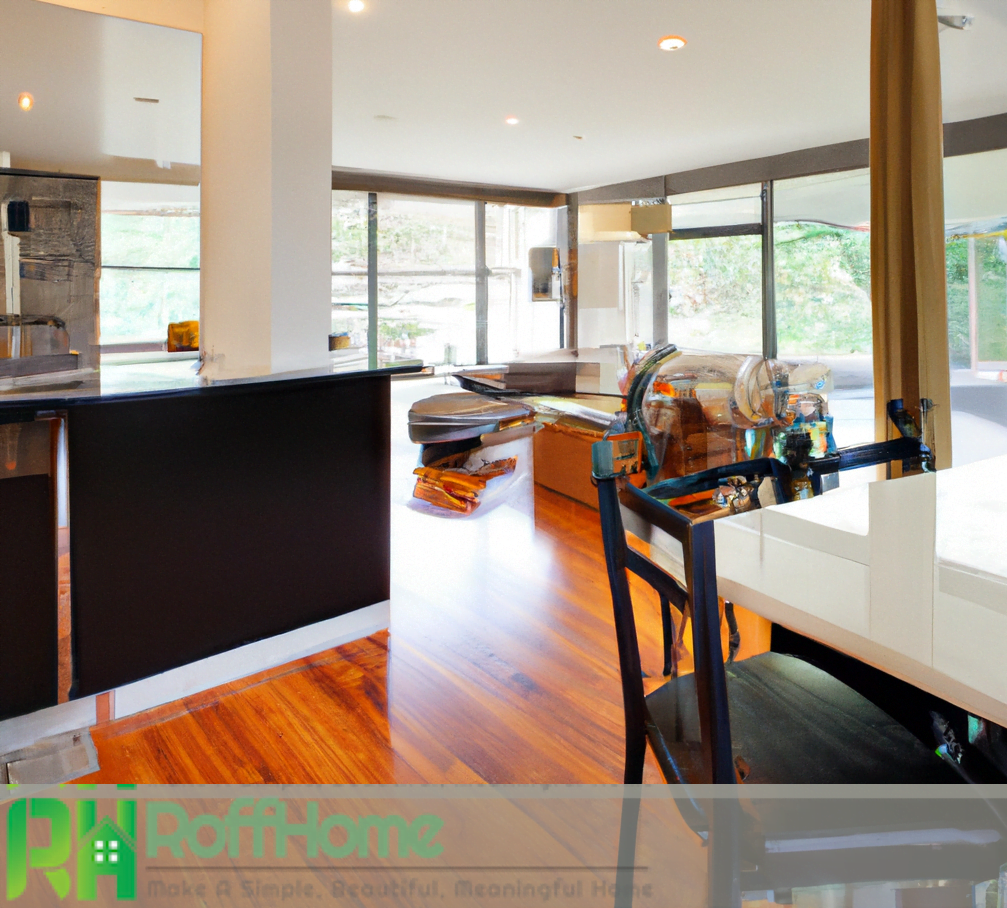
Combining a kitchen, dining room, and living room into one cohesive space is a great way to maximize the available space in your home. This combination of rooms creates a multifunctional space that can be used for various activities. With the right design, it can be a place to cook, entertain, and relax all in one.
The key to creating a successful kitchen dining living room combo is to create distinct areas for each function. For example, you could define the kitchen area as an island or peninsula with an adjacent dining area. The living room could be separated by furniture, such as a sofa, or it could be separated by a partition or room divider.
When it comes to furniture, you’ll want to create a balanced look by choosing pieces that complement each other. Stick to a single color scheme, and ensure the furniture is comfortable and sized appropriately for the space. Choose adjustable lighting to accommodate different activities in the room, and consider adding natural elements like plants or artwork.
Designing and decorating a kitchen-dining-living room combo space
Designing and decorating a kitchen-dining-living room combo space can be challenging but rewarding. To create an open and inviting atmosphere, it’s important to consider the layout, color scheme, furniture, and accessories.
A good layout should consider the flow of traffic and the furniture placement. The kitchen should be strategically located near the dining and living rooms, allowing easy access to all areas. Using an island or a breakfast bar, you can create a clear separation between the kitchen and the living room. The dining area should be near the kitchen, with a table and chairs that are proportional to the size of the room.
Regarding color schemes, neutral tones such as beige, white, and grey can create a warm and inviting atmosphere. To add a pop of color, you can use accent walls or statement pieces of furniture. When selecting furniture, it’s important to consider both form and function. A sectional couch or a comfortable armchair can provide a comfortable seating area for the living room, while a dining table and chairs should be stylish and functional.
Finally, accessories such as lighting fixtures, curtains, and decorative objects can bring the space together and create a cohesive look. You can use pendant lights above the dining table, floor lamps in the living room, and under-cabinet kitchen lighting to provide both task and ambient lighting. Curtains can separate the different areas and provide privacy, while decorative objects such as plants, flowers, and artwork can add a personal touch to the space.
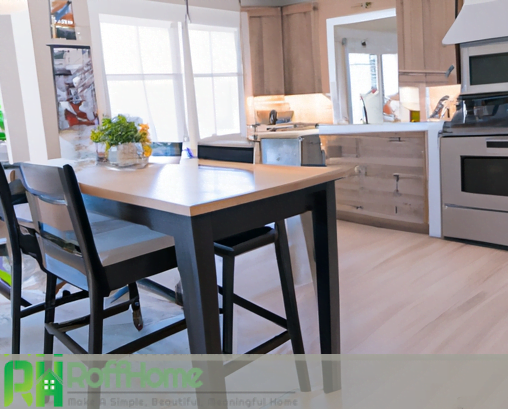
Tips for creating a functional and aesthetically pleasing kitchen-dining-living room combo
Creating a functional and aesthetically pleasing kitchen dining living room combo can be fun and exciting, but it also requires careful planning and execution. Here are some tips to help you create a functional and visually appealing space.
First and foremost, it’s important to consider the traffic flow in the space. The kitchen should be located near the dining and living rooms, with a clear separation between the different areas. You can use an island or a breakfast bar to create a visual divide between the kitchen and the living room.
Next, choose a color scheme that is both soothing and visually appealing. Neutral tones such as beige, white, and grey are good choices as they create a warm and inviting atmosphere. To add a pop of color, use accent walls or statement pieces of furniture in a bold hue.
Furniture should be functional and stylish, focusing on comfort and durability. A sectional couch or armchair can provide a comfortable seating area in the living room, while a dining table and chairs should be both practical and stylish. Consider the space size when selecting furniture, as you want to ensure that the pieces are proportional to the room.
Accessories such as lighting fixtures, curtains, and decorative objects can bring the space together and create a cohesive look. Use pendant lights above the dining table, floor lamps in the living room, and under-cabinet kitchen lighting to provide both task and ambient lighting. Curtains can separate the different areas and provide privacy, while decorative objects such as plants, flowers, and artwork can add a personal touch to the space.
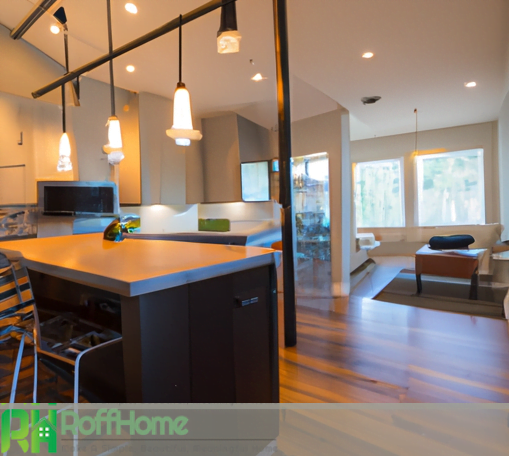
How to Make a Kitchen Dining Living Room Combo
Creating a kitchen dining living room combo is a popular design choice for many homes. It offers an open, spacious, and cohesive living area perfect for entertaining guests and relaxing with family. Here are some steps to help you create a kitchen-dining-living room combo:
Plan the Layout: Start by choosing the best layout for your space. Consider traffic flow and furniture placement, including the kitchen, dining table, and seating area. The kitchen should be located near the dining area, and the living room should be nearby, with a clear separation between the different areas.
Choose a Color Scheme: Select a color scheme that is both soothing and visually appealing. Neutral tones such as beige, white, and grey are good choices as they create a warm and inviting atmosphere. To add a pop of color, use accent walls or statement pieces of furniture in a bold hue.
Select Furniture: Choose furniture that is both functional and stylish. A sectional couch or armchair can provide a comfortable seating area in the living room, while a dining table and chairs should be both practical and stylish. Consider the space size when selecting furniture, as you want to ensure that the pieces are proportional to the room.
Add Accessories: Accessories such as lighting fixtures, curtains, and decorative objects can help to bring the space together and create a cohesive look. Use pendant lights above the dining table, floor lamps in the living room, and under-cabinet kitchen lighting to provide both task and ambient lighting. Curtains can separate the different areas and provide privacy, while decorative objects such as plants, flowers, and artwork can add a personal touch to the space.
Optimize Storage: A well-organized kitchen is essential to making a kitchen-dining-living room combo functional. Install shelves, cabinets, and drawers to keep kitchen essentials organized and within reach.
Different styles and design elements in a kitchen-dining-living room combo
A kitchen dining living room combo is a versatile space that suits various styles and design elements. Here are some of the most popular styles and design elements for a kitchen-dining-living room combo:
Modern: A modern design is characterized by clean lines, minimalism, and a neutral color palette. Sleek, glossy surfaces and stainless-steel appliances give a modern kitchen an ultra-contemporary look. A dining table with simple, straight lines and a modern chandelier provide a sophisticated touch, while a sectional couch and accent chairs in neutral colors complete the look.
Rustic: A rustic design is warm and inviting, focusing on natural materials such as wood and stone. A kitchen with distressed cabinetry, a farmhouse sink, and a stone backsplash provides a cozy, homely feel. At the same time, a dining table made from reclaimed wood and a chandelier with exposed bulbs adds to the rustic ambiance. A sectional couch in a neutral color, paired with a plush rug, completes the look.
Industrial: An industrial design is characterized by raw materials such as metal, concrete, and brick. A kitchen with stainless steel appliances, concrete countertops, and an exposed brick wall provides an urban edge. A dining table with a metal frame and a chandelier with exposed bulbs complete the industrial look. A leather sectional couch and accent chairs in dark colors provide a comfortable seating area.
Traditional: A traditional design is characterized by warm colors, intricate details, and a focus on comfort. A kitchen with shaker-style cabinetry, a farmhouse sink, and a backsplash with a classic pattern provide a homely feel, while a dining table with elegant curves and a chandelier with a classic design complete the traditional look. A sectional couch in a warm color, paired with a plush rug, completes the traditional design.
Coastal: A coastal design is characterized by light, airy colors and a focus on natural materials. A kitchen with white cabinetry, a farmhouse sink, and a backsplash with a nautical theme provides a beachy feel, while a dining table with a light wood finish and a chandelier with a coastal theme complete the coastal look. A sectional couch in a light color, paired with a plush rug, completes the coastal design.
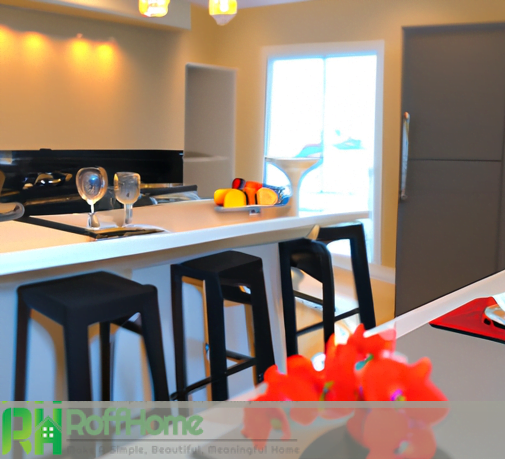
Common challenges in kitchen dining living room combo design
Designing a kitchen dining living room combo can be a challenge, but it can also be a rewarding experience with the right approach. Here are some of the most common challenges in kitchen-dining-living room combo design:
Space Constraints: A common challenge in kitchen dining living room combo design is limited space. Creating a functional and aesthetically pleasing space with limited square footage can be difficult and requires careful planning and execution.
Traffic Flow: Another challenge is ensuring traffic flow is efficient and logical. The kitchen, dining area, and living room should be located near one another but with a clear separation between the different areas to avoid overcrowding.
Lighting: Lighting is an important factor in a kitchen dining living room combo, but finding the right balance between task lighting and ambient lighting can be a challenge. Combining overhead lighting, pendant lights, and floor lamps can create a well-lit space.
Storage: A well-organized kitchen is essential to making a kitchen-dining-living room combo functional, but finding enough storage space can be challenging. Installing shelves, cabinets, and drawers and using vertical space can maximize storage.
Incorporating Different Styles: A kitchen-dining-living room combo can present the challenge of incorporating different styles and design elements into one cohesive space. Choosing a color scheme, furniture, and accessories complement one another is key to creating a cohesive look.
Furniture Ideas for a Kitchen Dining Living Room Combo
Furniture is crucial in defining the style and functionality of a kitchen dining living room combo. Here are some furniture ideas for a kitchen dining living room combo:
Dining Table: A dining table is a key piece of furniture in a kitchen-dining-living room combo, and choosing the right one is crucial. A small round table can be perfect for a compact space, while a large rectangular table is great for a larger room. Consider the size of the room, the number of people who will be using the table, and the style of the space when choosing a dining table.
Sectional Sofa: A sectional sofa is a great option for a kitchen-dining-living room combo. It provides ample seating space and can be arranged in various configurations to suit different needs. Choose a neutral color that will complement the room’s overall design scheme.
Accent Chairs: Accent chairs are a great way to add color, texture, and pattern to a kitchen-dining-living room combo. Choose chairs with a bold pattern or bright color to add visual interest to the space, or choose neutral chairs for a more understated look.
Bar Stools: Bar stools are a great option for a kitchen dining living room combo, as they can be used at a kitchen island or breakfast bar. Choose stools with a durable finish that will withstand regular use, and consider the height of the counter or island when selecting the right height.
Coffee Table: A coffee table is a key piece of furniture in a living room, and choosing the right one is important. A round coffee table is great for a compact space, while a large rectangular table is perfect for a larger room. Consider the room’s style and the coffee table size when making your choice.
Color, texture, and pattern in a kitchen-dining-living room combo
Color, texture, and pattern are important elements in a kitchen-dining-living room combo design. These elements can create a cohesive and aesthetically pleasing space. Here are some tips for incorporating color, texture, and pattern into a kitchen-dining-living room combo:
Color: Choosing the right color scheme is crucial in a kitchen-dining-living room combo. Neutral colors, such as white, beige, and gray, are a great choice for a timeless look, while brighter colors, such as blue, green, and yellow, can add energy and interest to the space. Consider the size of the room and the amount of natural light when selecting a color scheme.
Texture: Texture can add depth and interest to a kitchen-dining-living room combo. Choose textured fabrics, such as velvet and linen, for upholstered furniture, and consider using textured wall treatments, such as stone, brick, or wood, to add interest to the space.
Pattern: Pattern is a great way to add interest and personality to a kitchen-dining-living room combo. Choose bold patterns for accent pieces, such as throw pillows, curtains, and area rugs, and consider using a more subtle pattern for larger pieces, such as a sofa or curtains.
Advantages and disadvantages of having a kitchen-dining-living room combo
A kitchen-dining-living room combo can offer several advantages, but it also has some disadvantages that are worth considering. Here are some of the advantages and disadvantages of having a kitchen-dining-living room combo:
Advantages:
Increased Space: A kitchen dining living room combo can maximize space in a small home or apartment. Combining three functional areas into one creates a larger, more open, and multifunctional space.
Improved Flow: A kitchen dining living room combo can help improve the home’s flow, making it easier to move from one area to another. This can be especially helpful for families with children or for entertaining guests.
Increased Natural Light: By combining three areas into one, a kitchen-dining-living room combo can allow more natural light to enter the space, making it feel brighter and more welcoming.
Cost-Effective: A kitchen-dining-living room combo can be cost-effective, as it eliminates the need to build or install walls or doors between different areas, which can save on construction and renovation costs.
Disadvantages:
Lack of Privacy: A kitchen-dining-living room can lack privacy, as walls or doors do not separate the different areas. This can be especially challenging for families with small children or those who enjoy having separate spaces for different activities.
Lack of Storage: A kitchen-dining-living room combo can lack storage space, as the combined areas may need more space for all the items typically stored in each area.
Limited Design Options: A kitchen-dining-living room combo can limit design options, as the different areas must be designed to work together seamlessly. This can make it more challenging to achieve a desired style or aesthetic.
A kitchen-dining-living room combo can be a great solution for small homes or apartments, offering a larger, more open space. This combination can improve flow and bring in more natural light. Considering the disadvantages, such as lack of privacy and limited storage, is important before deciding on a kitchen-dining-living room combo. The right furniture, colors, and design elements can help create a functional and aesthetically pleasing space.

